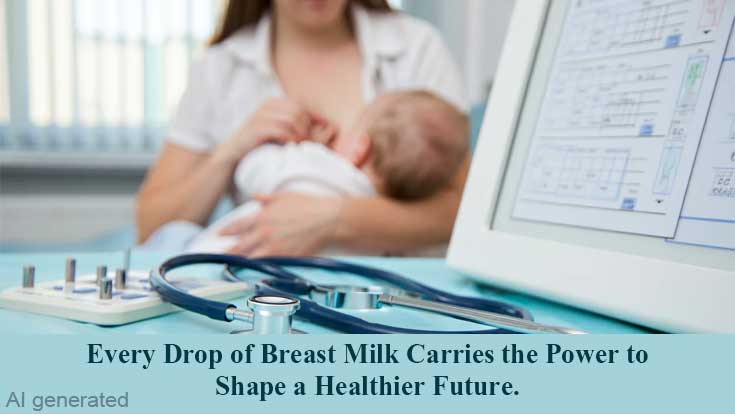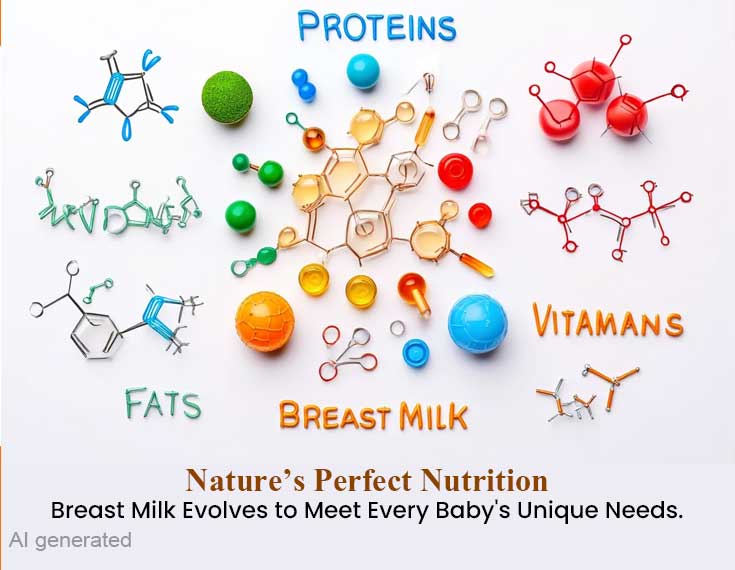Influence of gestational diabetes on breast milk composition and infant growth.
- Gestational diabetes alters key metabolites in human milk
- Certain metabolites are linked to faster linear growth and lower adiposity in infants
- Breastfeeding may help moderate obesity risks in GD-exposed infants

Mothers with gestational diabetes produce milk with distinct metabolites that may influence infant growth! #gestationaldiabetes #breastfeeding #medindia’
Breastfeeding & Diabetes: A Surprising Connection
For mothers with gestational diabetes (GD), their milk carries unique metabolic signatures that could influence their baby’s growth. Recent research reveals that GD alters key nutrients and compounds in breast milk, potentially shaping an infant’s metabolism and body composition.Women with GDM had less protein in their breast milk (2✔ ✔Trusted SourceMaternal gestational diabetes and infant feeding, nutrition and growth: a systematic review and meta-analysis
Go to source). Let’s dive into the fascinating science behind breast milk, diabetes, and early nutrition.
Hidden Impact of Gestational Diabetes on Milk
Most people associate gestational diabetes with pregnancy risks, but its effects don’t stop at birth. Scientists have discovered that GD alters the milk metabolome—the unique mix of bioactive compounds in breast milk (1✔ ✔Trusted SourceGestational Diabetes, the Human Milk Metabolome, and Infant Growth and Adiposity
Go to source). These changes may influence everything from infant fat storage to growth rates.
They might actually help regulate weight gain in newborns. Could these metabolic shifts be nature’s way of protecting babies from long-term health risks? Understanding the milk metabolome could unlock new ways to support infant health through breastfeeding.

Milk & Growth: What’s Happening to GD-Exposed Babies?
Every drop of breast milk delivers essential nutrients, but for infants of mothers with GD, the composition of these nutrients may be different.Skinfold thickness and baby weight did not correlate with GDM (2✔ ✔Trusted SourceMaternal gestational diabetes and infant feeding, nutrition and growth: a systematic review and meta-analysis
Go to source). Studies show that GD-exposed infants tend to have different growth trajectories, including faster linear growth but lower fat gain.
Researchers are now exploring whether breast milk from mothers with GD could influence a baby’s metabolism in ways that reduce obesity risks later in life. The question remains: How do these tiny metabolic differences shape a child’s long-term health?
Power of Breastfeeding: A Natural Equalizer?
Despite concerns about GD’s effects on milk composition, breastfeeding remains one of the best ways to support infant health. Exclusive breastfeeding has been linked to improved glucose regulation and metabolic balance, even in infants born to mothers with GD (1✔ ✔Trusted SourceGestational Diabetes, the Human Milk Metabolome, and Infant Growth and Adiposity
Go to source). While some studies suggest that certain milk components might promote rapid weight gain, others indicate that breastfed infants exposed to GD may develop healthier body compositions over time.
References:
- Gestational Diabetes, the Human Milk Metabolome, and Infant Growth and Adiposity - (https:jamanetwork.com/journals/jamanetworkopen/fullarticle/2827802)
- Maternal gestational diabetes and infant feeding, nutrition and growth: a systematic review and meta-analysis - (https://pubmed.ncbi.nlm.nih.gov/31964432/)
Source-Medindia
















